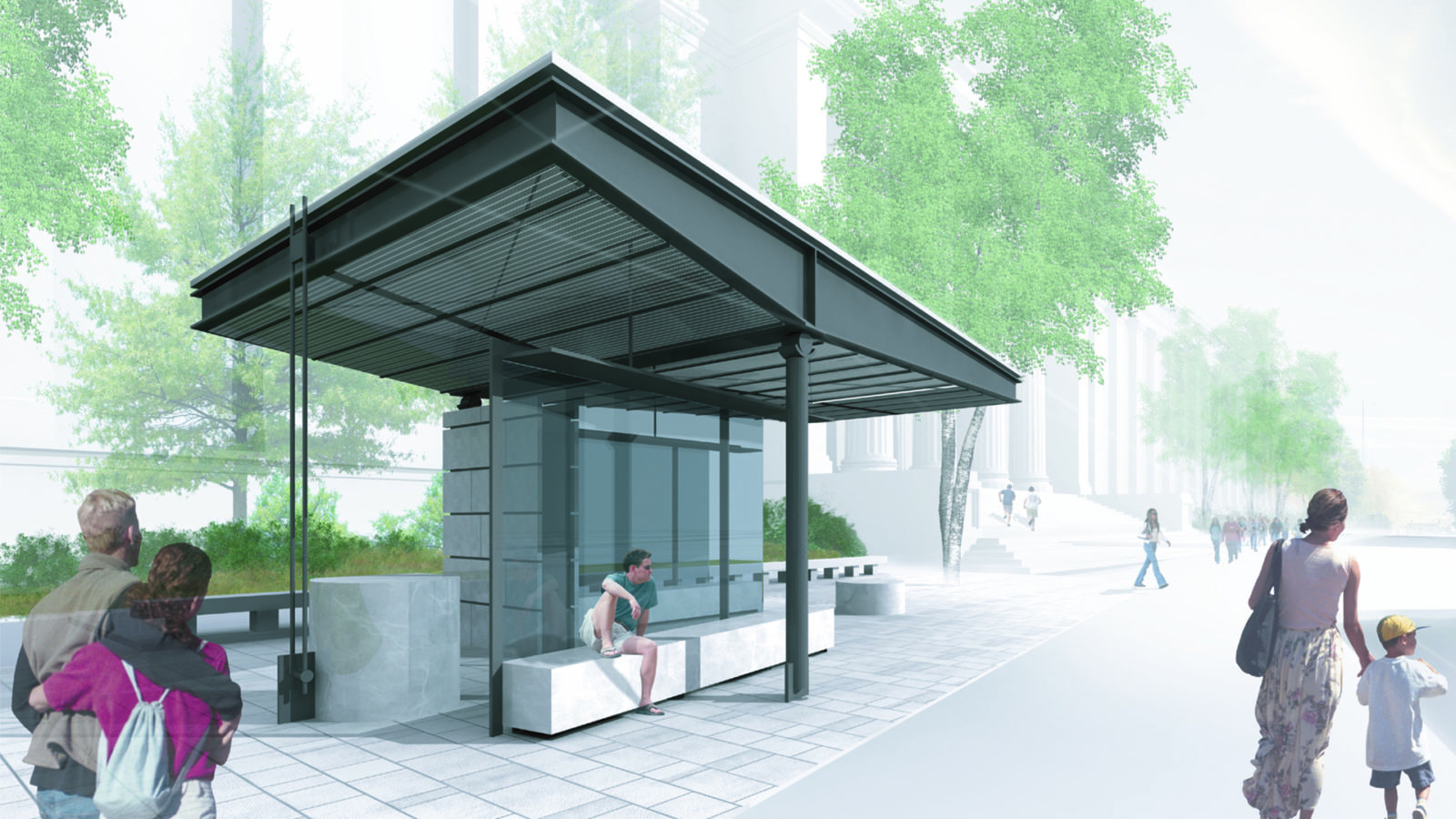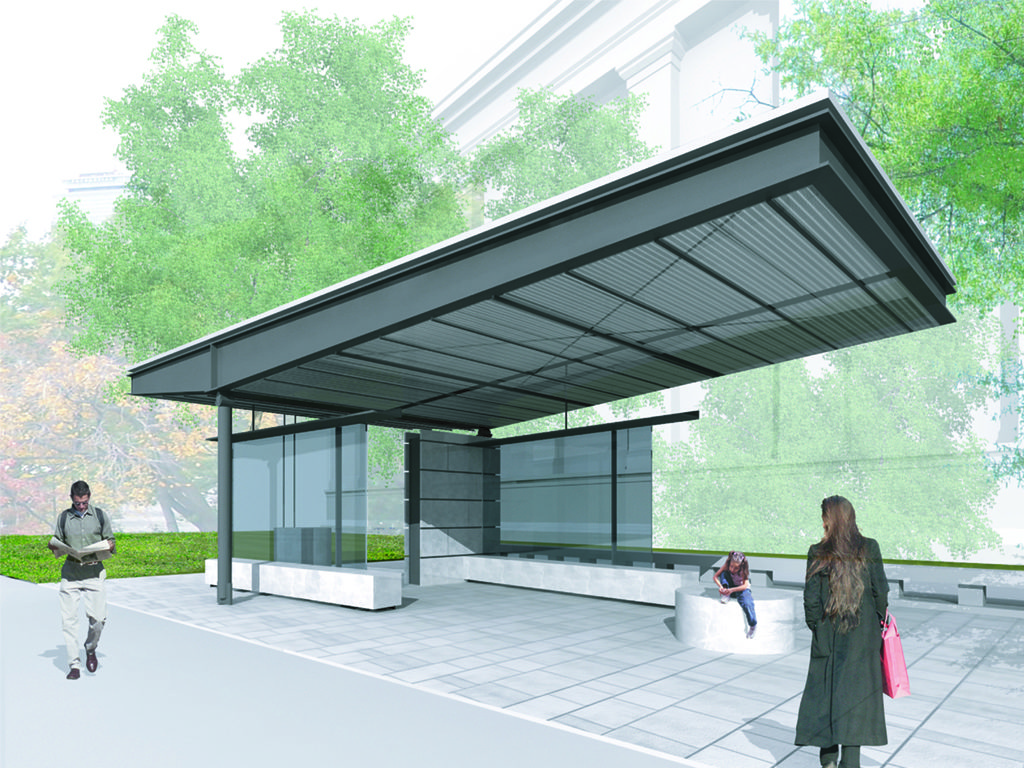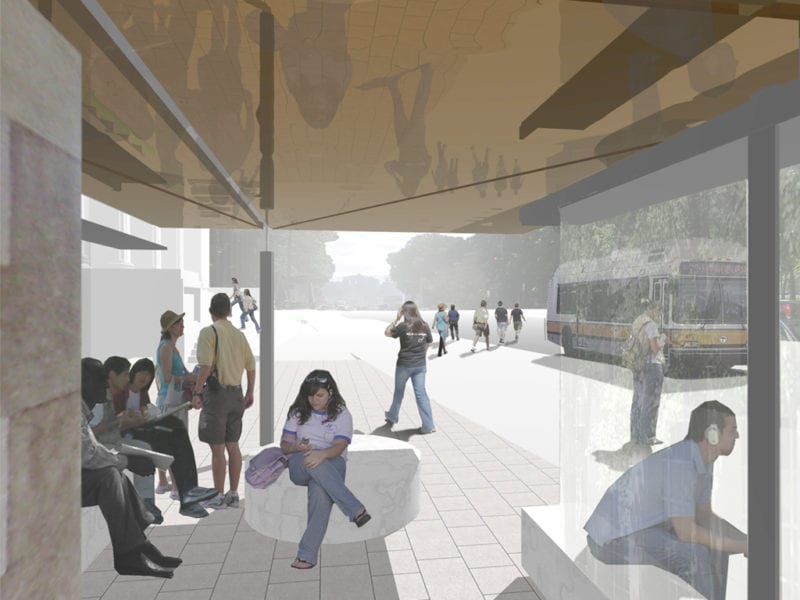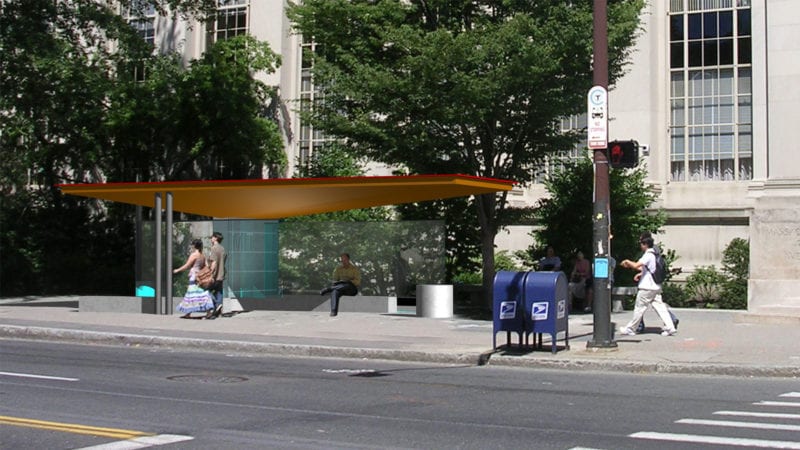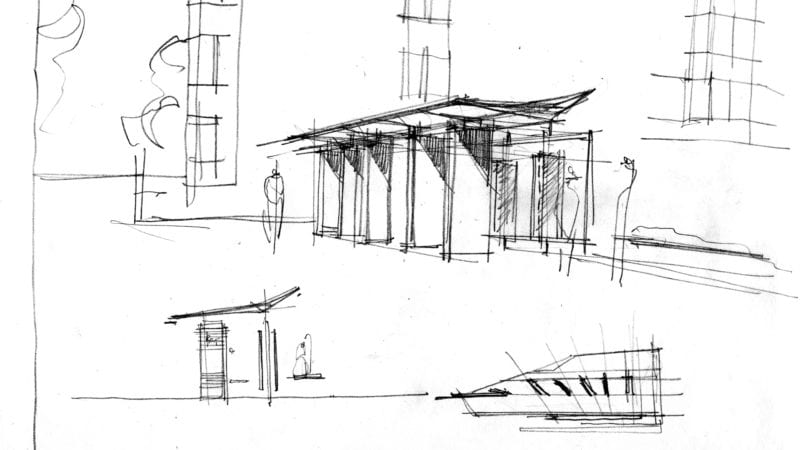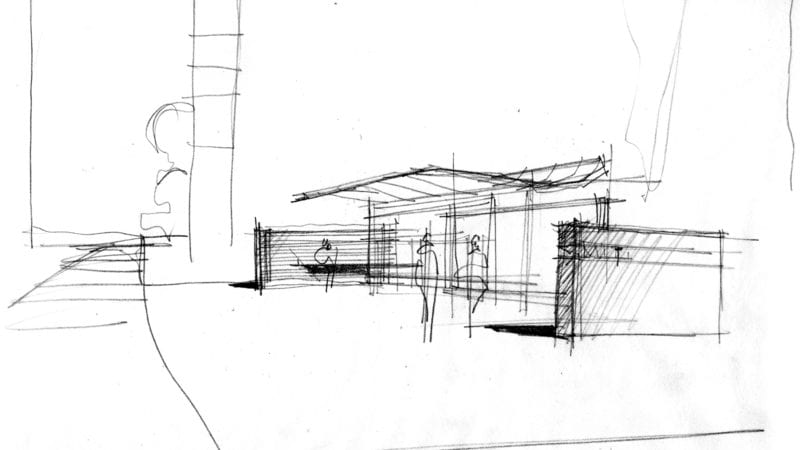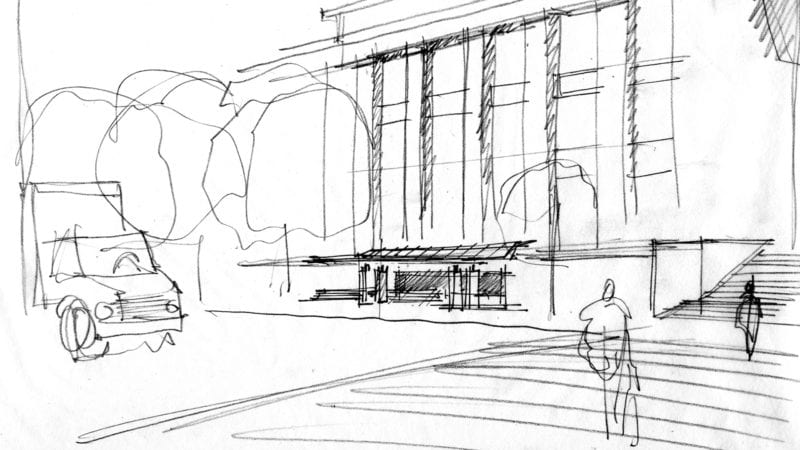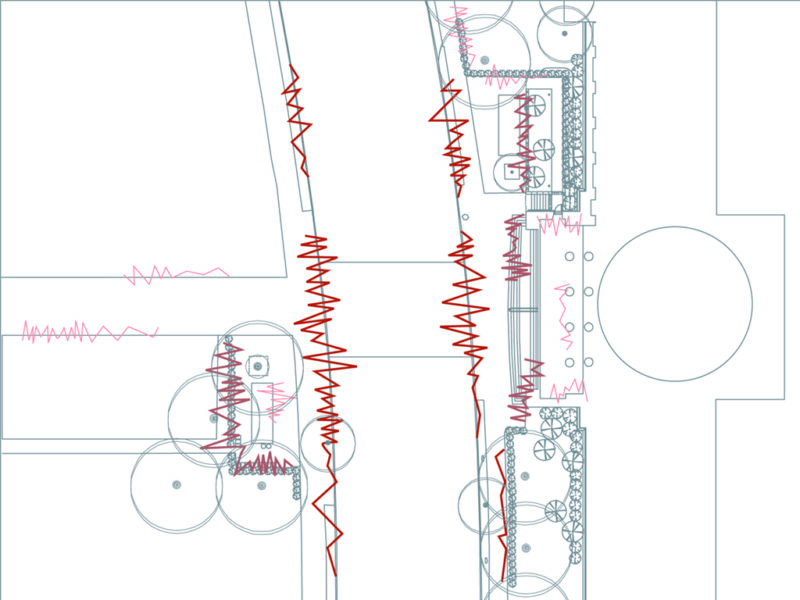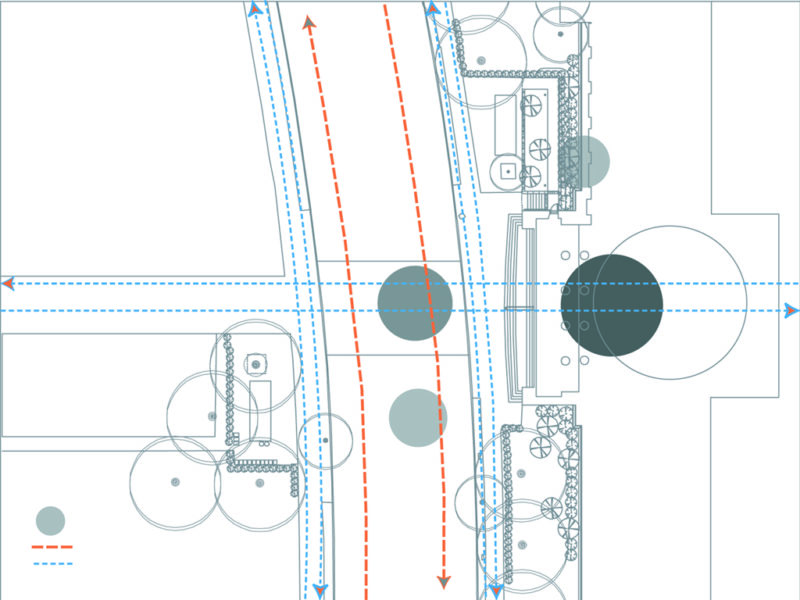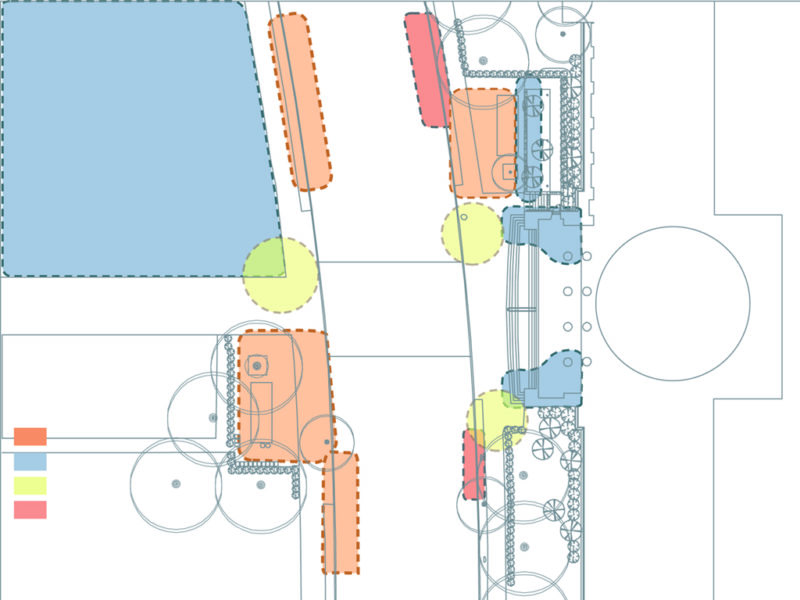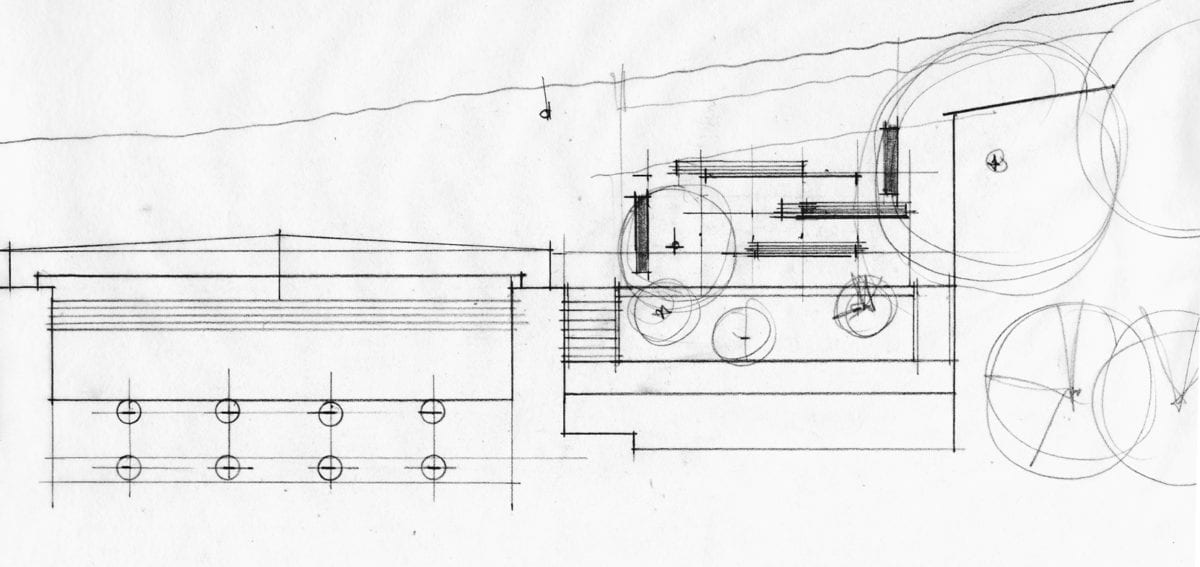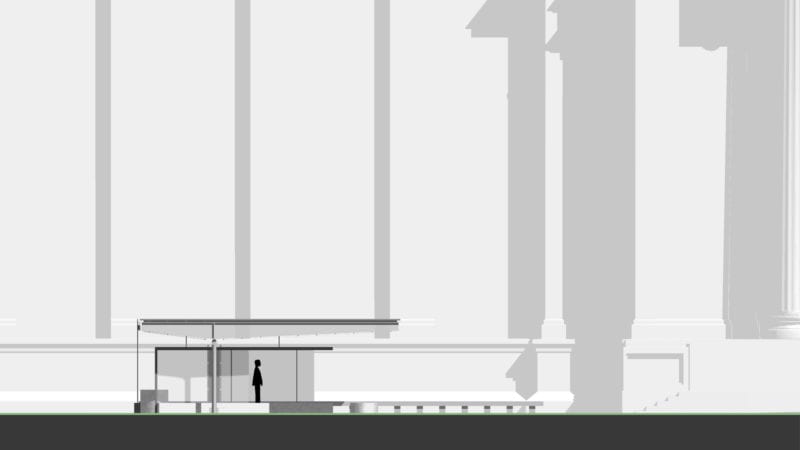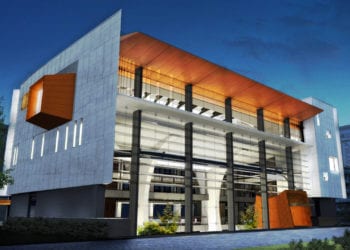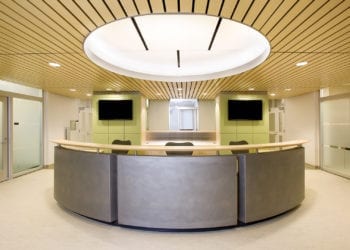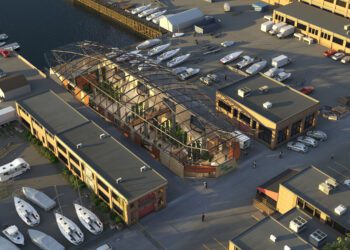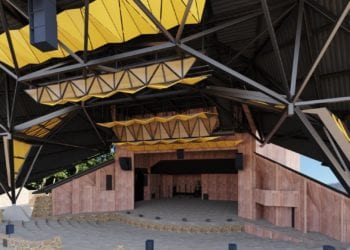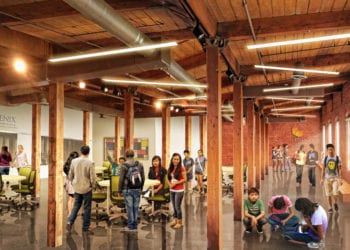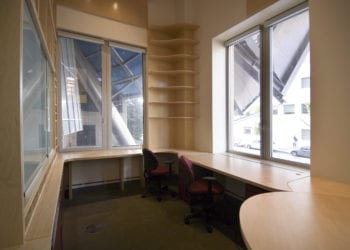Synopsis: As the primary bus stop for a university in Cambridge, Massachusetts, this station is placed at the intersection of the school’s interior pedestrian route and a broad avenue bisecting the campus.
Detailed Description: The bus stop, tucked beside the grand staircase of the building’s main entrance, comprises three sets of materials and zones. Limestone blocks compatible to those in the building’s foundation provide commuter seating. The overhanging steel roof reflects the university’s engineering tradition while providing generous shade and shelter. Glass panels between the base and roof shield winter winds while opening out to oncoming buses and the avenue’s public edge.
This project’s structural engineering design is noteworthy. Paul Kassabian (PE) designed the roof canopy as a dramatic cantilever, designed much like a diving board. It rests on a pivot while its shorter backend is tethered to a cylindrical concrete counterweight, only two feet of which are above ground, to serve as a seat.
This bus station conveys a sense of permanence appropriate for its site while supporting informal social interactions among students, faculty and passers-by. It also respects its historical context while embracing contemporary tectonics appropriate for a science/engineering school.

